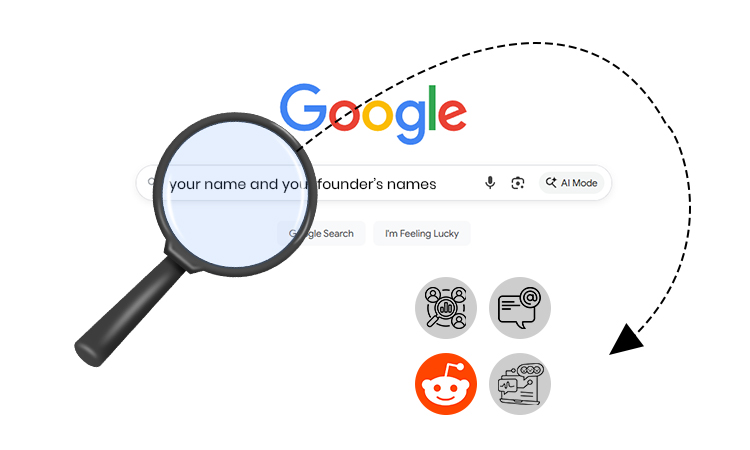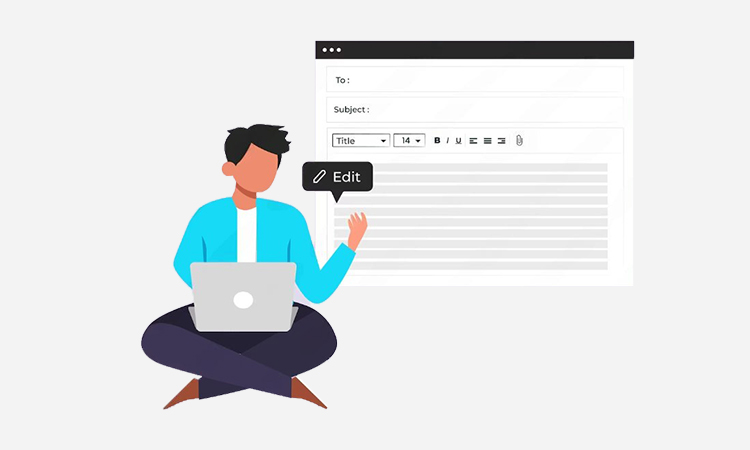If you’re operating a startup, chances are you’ve heard that “get some PR.” But what does that entail, and more importantly, when should you exactly do it?
The reality is PR for startups involves much more than “getting your name out there.” It’s about establishing credibility, visibility, and trust level before there is a calling card-style marketing budget. In fact, it’s one of the smartest things you can do at the early stage, before anyone knows who you are.
Think about it:
- Before someone buys your product, they Google you.
- Before an investor writes you a cheque, they Google you.
- Even before a new hire joins your company, they Google you.
According to Blue Ocean Global Tech (2024), 99.95% of consumers research a brand online before making a purchase. In fact, Chatmeter (2024) found 93% of buyers read reviews before making a purchase as well. That’s almost everyone.
So what happens if your startup isn’t showing up with credibility? You’re invisible, or worse, you’re untrustworthy.
That’s where PR comes in. Good PR doesn’t just give you a little publicity and visibility; it helps to shape perception. Good PR for startups helps you tell your story before someone else tells it for you.
Here’s what founders of early-stage startups miss: you don’t need a Fortune 500 budget or a PR degree. You require a strategy that connects your story to the right journalists, at the right time, to the right audience.
That’s what this guide is designed to help you with: a 10-step plan so that you can plan, pitch, and measure a PR campaign that moves metrics, not vanity press mentions.
By the end, you will know how to
- Identify what stories matter most to the media.
- Build valuable, lasting relationships with journalists & editors.
- Repurpose your wins through marketing, sales, and fundraising.
- Turn PR into a real growth engine to scale your startup.
What is PR and Why Startups Need PR
When people hear “public relations,” they think of press releases, big media events, or CEOs giving interviews to CNBC. But that’s a small portion of what PR really is.
PR (public relations) is how you manage what people think and say about your brand, journalists, customers, and investors. Here is the most simplified way to look at it:
- Marketing tells the audience what you want them to know.
- PR helps the audience believe it.
Good PR for startups does not sell directly; it supports the credibility that makes selling a lot easier. When your startup is featured in trusted media, quoted in reputable industry press, and praised by influencers, the people assume, “If your startup is trusted by them, maybe it is worthy of my trust.”
This is the psychological basis of PR: social proof. And for a startup, social proof is worth its weight in gold.
Why PR is Important for Startups
Startups do not have the luxury of brand recognition. You are battling for the attention of an increasingly noisy and skeptical world. PR can lead to the greatest preferential advantage through a mindful PR strategy.
Here is how it helps you at each of three stages:
Pre-Launch Stage: Create excitement by announcing your mission, teasing your product, and getting buzz started.
Launch Stage: Create awareness through a media blitz or catch-up coverage of your launch, partnerships, or financing to build credibility and excitement.
Stage of Growth: Build scale and trust by endorsing your clients through case studies, showcasing thought leadership, and applying for industry recognitions to legitimize your organization.
Types of PR Strategies for Startups
When you think of PR strategy, you think of big brands. However, the easy part is that all startups can have a PR strategy; the hard part is discovering the right strategy for your stage and for you.
Here are six of the best PR strategies for startups:
1. Media Outreach and Press Releases
The media contact and press release are the original and most reliable PR for startups tactics. The media contact can be defined as cultivating relationships with real journalists, editors, and bloggers who have expressed interest in your niche; it is not submitting the same press release to 200 reporters.
Once you have established a relationship, you can send them a thoughtful, newsworthy press release about a funding round, launch event, or data milestone that adds credibility to your story.
2. Thought Leadership
Thought leadership is a way to convert your experience into visibility. Company founders often underestimate their journey. You can share this perspective of experience through guest posts, LinkedIn articles, podcast interviews, or on a panel.
When someone sees your name in print or sees your article, people naturally connect that to credibility and trust. It’s not boasting; it’s intentional storytelling that can develop authority over time.
3. Awards and Recognition
External validation has always mattered. It could be “Startup of the Year” or “Top 10 HealthTech Innovators” or something similar. Any award provides an immediate pathway to credibility. Pay attention to the awards that matter to your audience or investors.
One great award trumps 10 awards that don’t matter. And every award you achieve becomes an owned PR asset, like a website badge, social post, or used in an investor deck.
4. Influencer & Blogger Connections
PR is no longer strictly from traditional media. Today, micro-influencers and niche bloggers can quickly influence perceptions over larger media outlets.
Collaborations can include reviews, sponsored content, or webinars together. But you want to select a creator who matches your audience’s values; authenticity is always favored. Anything that feels forced will not translate.
5. Event PR
Events are ways to tell your history. Whether it’s introducing your product, news about funding, or a local community meet-up, they all create a reason to activate PR to your audience.
Invite journalists, share behind-the-scenes moments, and create opportunities to spark visibility before and after the event. Think beyond the event day; convert moments into a more prolonged story if possible.
6. Crisis PR
We don’t want to think about it, but things can and do go wrong. A negative review, product bug, or a tweet gone sideways can happen quickly.
Crisis PR for startups isn’t about public relations spin; it’s about being fast and authentic. You can respond quickly, be transparent, and focus on fixing rather than defending. You might just have the opportunity to actually build trust through the crisis, rather than destroying trust.
When Should a Startup Be Doing PR?
Every founder finds themselves asking at some point, “When is the best time to do PR for startups?” Some wait for funding; others swear to start on day one. The truth is, for most start-ups, the right time is earlier than you would expect.
Many founders wait until they have a good website, 1,000 users, or have achieved some important recognition. But PR for startups is not about size; it is about story. If you have a clear mission, a real problem that you are solving, or a founder journey of your own that people can relate to, then you are ready.
Pre-Launch Stage: Creating Anticipation
Prior to your product’s launch, PR for startups helps you sow the seeds. Share your “why,” origins story, or pitch a local startup blog. Even small mentions help create early SEO traction and intrigue with investors. You are not selling; you are creating those that care about you before you launch.
Launch Stage: Move the Decisive Moment Into Momentum
Launch PR for startups is your kickstarter. Promote your product, approach journalists in your niche, and connect with the relevant crowds.
A single story that aligns with a news cycle can turn into coverage and create opportunities with early adopters and possibly investors. Just remember, the work begins after launch. You need to continue sharing updates and wins to extend the story.
Growth Stage: Authority, Credibility
Once traction starts working, PR for startups is about trust at scale. Share customer success stories. Publish thought leadership. Also, apply for awards. This is where you transition from “We exist” to “Here’s why we lead.” It’s really about being visible, relevant, and respected.
The best time to introduce PR for startups is to tell your story with confidence, no matter how small. It’s essential that you don’t wait too long, as things will seem forced and sound slightly awkward in those moments.
As one founder put it, “If you only start PR when you need attention, it feels desperate. When you start early, it feels natural.”
Founder-Led PR vs. PR Agency for Startups: What is the Best Model?
Let’s be real: PR for startups can feel daunting. For a founder who has already been through the ups and downs of product development, sales, and fundraising, it can almost feel impossible to kick-start a relationship with the press.
Founder-Led PR: The Personal, Relational Way
In the earlier days, founder-led PR works quite nicely because recounting stories and experiences feels personal and fresh. Journalists love talking to the people behind the idea. There is a cost-saving element too; it is authentic and builds long-term media relationships. You will often find that you receive quick feedback on which stories resonate.
However, it is tedious work identifying journalists, putting pitches together, and following up. If you don’t have access to a large media database, it can sometimes feel as though you do not have much reach.
Agency-Based Public Relations: A Professional Approach
Eventually, as your start-up grows, it becomes cumbersome to manage your PR operation in-house. Agencies can bring some structure, scale, and relationships with journalists. PR agencies typically specialize in outreach, reporting coverage, and handling crisis outreach as needed. This allows you to spend your time and energy on the more pressing matter of actually scaling.
The Hybrid Approach: The Smart Middle Option
For most startups, the best option is hybrid. Deliver founder-led storytelling to retain authenticity and bring in an agency to scale it. In this option, you provide the story to the agency created in your voice. The agency refines it into a press pitch, sends it out, and measures coverage.
For example, a founder writes a personal blog. The agency turns it into a press pitch securing coverage. Authenticity meets expertise.
A Step-by-Step Outreach Plan for Beginners
At some point every founder has fantasized about seeing their startup in TechCrunch, Forbes, or The Economic Times. But if you have even attempted to send your first pitch, you already have felt the reality of silence. No reply. No coverage.
The thing is journalists aren’t ignoring you because you have a bad story. They are ignoring you because you aren’t ready. PR isn’t random or about making connections; it’s a process you can follow even if you have never pitched anyone before.
So let’s review a 10-step outreach roadmap for you:
Step 1: Create Business-Aligned, Measurable PR Goals

Before you even type a pitch or write a press release, pause and ask yourself, “What do I actually want PR to do for my business?” Too many startups pursue “visibility” without defining the meaning of visibility.
PR goals should be targeted, measurable, and related to outcomes that make sense, such as higher search visibility, improved trust from investors, or better quality leads.
Think SMART:
- Earn 5 mentions within 3 months.
- Increase branded search volume by 30% in 6 months.
- Generate 100 demo requests from referral traffic in 1 quarter.
The key to effective PR is aligning every PR objective with a core business goal, not treating it as a separate silo.
Step 2: Assess Your Startup’s Current PR Position

Before you shout your story from the rooftops, take a minute to check out what the world sees. Search your name and your founder’s names on Google. What appears in the first ten results? That’s your public image today.
Check for:
- Existing press mentions or reviews.
- Social sentiment (positive, neutral, or negative).
- Reddit or forum discussions about your brand.
- Competitors are getting featured, and where.
And here’s a bit of a reality check: Google Alerts is not a comprehensive tool and is only good to get started. If you want true visibility, invest in a platform like Brand24, Mention, or Talkwalker to monitor mentions, sentiment, keywords, and reach across platforms.
Once you know your baseline, you will know what stories to leverage and narratives to repair or improve.
Step 3: Build a Messaging Framework
Your messaging is your North Star. Without messaging, even effective PR for startups sounds unfocused. Messaging starts with a one-sentence pitch—one line that describes what your company does in plain English.
For example, “We help small eCommerce brands save 40% on shipping costs by use of AI logistics optimization.”
Then, clarify 3–5 core themes you want every narrative to emphasize, like innovation, transparency, and social impact. And add proof points (metrics, testimonials, and awards) to substantiate. Consider a “story bank” of the 5–6 angles that could be pitched: product launches, founder stories, customer success, or data insights.
Authenticity is key. Consumers need to trust a brand to “do what’s right” before they buy. Start honest, not hype.
Step 4: Create a Media List and Start Building Relationships

PR for startups is about relationships, not mass emails. Use a resource like Muck Rack, Anewstip, or Hunter.io to search for relevant journalists who cover your space. Try to find reporters who have covered stories in your niche in the past several months.
To keep it organized, create a simple spreadsheet with columns for:
- Journalist name and outlet
- Beat/topic they cover
- Link to recent article
- Pitch idea and contact info
- Date contacted/followed up with journalist
Quality over quantity: plan to target about 20 key journalists and 50 niche reporters, and especially, engage authentically. Comment on their stories, share their posts, and establish contact prior to a pitch.
Step 5: Create a Professional Media Kit

A media kit is the PR resume for your startup. It should contain everything the journalist needs to write about you without having to chase down details. Your kit should contain:
- A one-page overview of your company, including a short boilerplate
- Bios of the founder(s), including short and long versions and high-resolution images
- Screenshots of the product or demo links
- Case studies or customer quotes
- Logos and branding information
- Links to previous media coverage or awards
- A usable email address
Put everything in a public link, such as Dropbox, Google Drive, or your website, that is easy to use, quick to download, and visually appealing.
Step 6: Write Customized, Timely Outreach Pitches

Generic emails are the death of great PR and a journalist sees right through them. You should write each pitch out as if you were talking to one person.
The structure of your pitch should look like this:
- Subject line: 6-8 words max and should be clear.
- Opening: You should reference something they’ve written that is relevant.
- Value: You should explain what would interest their readers.
- Hook: Share what is new, exclusive, or timely about the subject.
- Call to Action (CTA): Offer a quick call, demo, or quote.
Use different templates for product launches, data stories, or founder features. Follow up once (after 48 hours) and again after a week with additional value. The first follow-up often has the best response.
Step 7: Optimize Timing and Frequency of Your Outreach

Even a solid pitch may be lost if you send it at the wrong time. The best time to reach journalists is Tuesday–Thursday between 10 AM and 2 PM. Avoid sending on Monday (too hectic) or Friday (too quiet).
Send one gentle follow-up after 48 hours, with updates like new data or a visual. Do not spam. Consistency and thoughtfulness count. You gain credibility with consistent and thoughtful communications.
Step 8: Follow Through and Track All Activity Attributed to PR

You cannot improve what you cannot measure. Track each pitch and response with a simple PR tracker. Create a spreadsheet with:
- Date of pitch, outlet, name of journalist, and story idea
- Status of response (and publish link)
- UTM tag to track referral
- Notes on feedback or lessons learned
If you use Google Analytics, you can connect PR to performance. Identify which stories generated demo signups, web traffic, or brand searches, etc. Consistent reporting promotes the ability to turn PR from guesstimates to an actionable growth strategy.
Step 9: Repurpose Media Wins for Maximum Impact
Don’t let a great feature die after one post. Repurpose every media mention across your channels:
- Transform your article into LinkedIn posts or tweet threads.
- Add “As Featured In” badges to your website and decks.
- Share coverage in your email newsletters.
- Build your own press page on your site for SEO.
- Utilize quotes from journalists or customers in sales material.
- Mention the coverage as an investor update.
Every time another person sees that coverage again, the transaction trust with your brand is strengthened.
Step 10: Measure, Analyze, and Iterate

Consider PR an experiment in progress. Every few weeks, evaluate which approaches are successful, which journalists reply, which stories perform, and what type of coverage gets results week to week.
Key metrics to track:
- Total media mentions
- Referral traffic and conversions
- Sentiment (positive, neutral, negative)
- Share of voice vs competition
Then refine, repeat, and evolve. PR is not just a one-time campaign; consider it a rhythm. The more you practice it, the more it compounds into lasting credibility.
Top PR Tools & Platforms for Startups
You don’t need a team of 10 PR pros to do great outreach; you just need the right tools. Luckily, there are plenty of inexpensive platforms for founders and small teams to manage PR like professionals. Below are the best utility platforms in four areas: media outreach, press release distribution, monitoring, and reporting.
1. Media Outreach Tools: Finding and Contacting Journalists
Media outreach tools help you find, research, and connect with journalists interested in your story.
- Muck Rack
Muck Rack allows you to search journalists based on their beat, outlet, or keywords. You can see their writing history and connect with them on social media or through contact information the platform verifies. This is a great platform for building targeted lists of journalists instead of sending generic emails in bulk.
- Anewstip
Anewstip uses keywords to help you locate journalists who have recently written or mentioned your topic. For example, if you enter “fintech funding,” you get a list of journalists who posted about this topic within the last 30 days. This helps you submit your pitch to a relevant journalist when the topic is fresh.
- Hunter.io
Hunter.io assists you in locating verified journalist emails associated with company domains, which is particularly advantageous for small blogs or independent reporters. Integrates quickly with gmail, and saves you hours of manual searching for media lists.
- HARO
HARO connects journalists with expert sources. You receive daily emails from reporters looking to find experts. If your response is relevant, your startup could be featured in publications such as Forbes or Business Insider.
- Prowly
Prowly is an end-to-end PR suite, integrating journalist discovery, outreach, press release writing, and analytics. You can think of it as a mini PR CRM, built for small businesses and startups to create structure and scale.
2. Press Release Distribution Tools
When you want to distribute news to a larger audience, press release distribution platforms can help.
- PR Newswire / Business Wire
They distribute your release to thousands of verified outlets around the world. They are very expensive (starting at around $300 per release), but they provide you with the reach and credibility for important press events.
- EIN Presswire
This is a budget-friendly option for distributing your release to a relevant audience of journalists and publishers online. You’d be best suited to use this service for a product launch, event announcements, or regional announcements.
- PRWeb
PRWeb strikes a balance between the other two services and offers the most affordable pricing, with analytics and backlink reporting. Its pricing and reporting capabilities resonate with tech startups launching their product to media and SEO-focused startups.
- IssueWire / GlobeNewswire
They focus on price and prompt engagement while providing keyword tagging for SEO. Both services are excellent for smaller startups that wish to appear in Google News and remain relevant online after their release.
3. Monitoring & Media Tracking Tools
After your PR initiatives are live, monitor the buzz around your brand in the media, on social, and in discussions around your company online.
- Google Alerts
This is the easiest way to track mentions of your company name, founder, or product keywords. Google Alerts sends you regular email alerts to notify you of new mentions. Consider using this as a launching tool, but don’t rely on this as the only tool for monitoring.
- Brand24
Brand24 allows you to follow mentions of your brand across blogs, news sites, forums, podcasts, and social platforms. This analyzes sentiment (positive, neutral, or negative), which gives you a heads-up about a crisis. For instance, if someone posts a negative thread about your product on Reddit, you will immediately be notified.
- Mention
Mention sends you real-time notifications and lets you set alerts for specific keywords or hashtags. You can connect it with Slack and your team will be alerted in real time. This would be great for community-driven startups that are actively engaged in social media.
- Talkwalker
Talkwalker has high-end analytics, such as tracking engagement, reports on reach, and special metrics for competitor comparison. It is a better option for growth-stage startups that need data-driven insights for PR.
- Awario
Awario helps you know who’s talking about your brand and what they are saying. Use this tool to find micro-influencers or journalists that are already having a conversation relevant to your topic. You can be a guest in the natural conversation.
4. Analytics & Reporting Tools
PR should not end when your story is published; the value is in tracking impact.
- Google Analytics
Google Analytics shows you how much traffic or leads are actually coming from your press mentions. Adding UTM parameters to every link in your outreach, such as utm_source=techcrunch&utm_medium=pr&utm_campaign=launch2025, provides insights on what stories lead to engagement.
- CoverageBook
CoverageBook allows you to put together reports that include screenshots, views, and backlinks, which is great for providing your PR analytics to shareholders or investors.
- BuzzSumo
BuzzSumo analyzes what stories and formats are most significant in your industry; find trending topics, outline your pitches, and build stories that fit your audiences.
- Meltwater
Meltwater offers robust tracking, including AI-powered insights on reach and sentiment. It is better suited for teams to provide insights on engagement.
5. Bonus: Free DIY Tools That Actually Work
If you are just getting started, you can run lean and use free tools to accomplish any task as well.
- Google Sheets or Airtable: Track your outreach, responses, and coverage.
- Canva: For clean, professional media kits and visuals.
- Google Alerts: Basic brand monitoring.
- Bitly: A shortened link, but you can measure the number of clicks thereafter in order to discern engagement.
- Notion or Trello: For your PR workflow or deadlines.
Common Mistakes in Public Relations to Avoid
Doing PR for startups isn’t rocket science, but it doesn’t forgive frivolous mistakes. Most founders make the same mistakes over and over that kill their chances for real coverage and credibility.
1. Overhyping Without Substance
Most startups sound like commercials instead of stories. Journalists don’t want to read buzzwords. They want facts. Data builds an audience’s trust, not adjectives.
2. Sending the Same Pitch to Everyone
Generic emails say “lazy.” Journalists delete dozens of mass emails. Personalize your email. Reference their article, connect your story or brand to it, and prove that you actually read their article.
3. Ignoring Niche Publications
Only chasing the big names like Forbes or Time is missing out on the real buyers. Generally, smaller niche publications convert better because they are more relevant to your audience. Relevance always wins out over reach, and in PR, you want to go find where your audience actually lives.
4. Thinking about PR as a One-Time Campaign
PR is not a one-and-done stunt. Momentum fades quickly. Things like sending them an update every month, or customer stories, or insights keep you visible to your audience and earn journalist attention in the long run.
5. No Follow-Up or Poor Follow-Up
A single polite follow-up email can save your pitch. Five nagging emails can kill your chances. Follow up with value, like updates, new data, etc., instead of a nagging email.
6. Not Measuring Impact
Coverage means nothing if there is no traffic or trust associated with it. Always measure UTM links, referral visits, and branded search growth as a way to demonstrate the ROI of PR.
7. No Crisis Plan in Place
Things don’t always go as planned, whether it’s bugs, backlash, or bad reviews. In negative situations you need to respond quickly, self-identify any mistakes, share how you resolve them, and maintain a level of transparency to regain some level of trustworthiness.
8. Forgetting the ‘R’ in PR
PR for startups is not transactional; you need to actually engage. Share the journalists’ work, provide data, congratulate them on a special achievement, etc. This authenticity will grant you more open doors than a hundred cold pitches.
9. Not Aligning with Marketing and SEO
PR and SEO are friends. Use press mentions, create backlinks, and share coverage to gain visibility for both. Thoughts, stories, and messaging is best amplified through a unified message and coordinated response.
10. Giving Up too Easily
PR takes time. You will be rejected, but you are not failing. Each rejection is just data on which to rethink your angle, pitch, etc. A credible reputation takes time to build, and trust, respect, and credibility compound slowly.
Real-Life PR Case Studies
The best way to see the power of PR is through real stories. These three short examples show how wise, consistent PR for startups enhances the visibility, trust, and traction that influence the brand.
Case Study 1: SaaS Startup Earns 5 Major Features in 90 Days
A SaaS startup had a great product but had no media exposure. The founder initiated a 90-day PR campaign. They clarified their message, created a short list of journalists, and pitched one tailored story each week.
They contacted journalists through LinkedIn before pitching to avoid being flagged as spam. At the end of 90-days, the startup had achieved five media features, two podcasts, and a 35% increase in demo requests. An investor even found out about them from their blog mention.
Case Study 2: Skincare Brand Turns Reddit Criticism into PR Gold
A D2C skincare startup received criticism on Reddit for copying a competitor’s formula. Instead of hiding, the founder stepped in and addressed the issue directly by clarifying the ingredients, sharing lab data, and producing a blog post titled “Why Ingredient Transparency Matters.”
Three independent bloggers published the story and brand sentiment shifted from 60% negative to 85% positive, and the brand gained tens of thousands of new followers after the fact.
Case Study 3: Founder Story Drives 200% Growth in Inbound Leads
A fintech startup struggled with cold branding until the founder published the story about how a painful tax season was the impetus for starting the company. The article was published in Entrepreneur India and other finance blogs.
Within one week, website traffic surged 60%, demo requests doubled, and six months later, they closed Series A funding. In every meeting with investors, at least one investor mentioned that article.
When to Hire a PR Agency
As a startup progresses, at some point it may not be possible to handle in-house PR. If you are taking your startup global, launching in multiple markets at once, or with a complex communications strategy, consider hiring a PR agency.
Signs You Need a PR Agency
- Global Growth: You are either entering new regions or countries that require localized storytelling to fit new audiences and cultural differences.
- Real-time Monitoring: Your brand is getting frequent media coverage or customer engagement. You need real-time tracking of your reputational status to help mitigate potential problems.
- Multiple Languages: You are operating in several markets and need messaging and translations that are accurate across languages.
- Crisis or Reputational Threats: Negative reviews, social media backlash, or misinformation are heightened threats today. You need experts to help manage and contain quickly.
- Limited in-house PR Experience: Your team lacks media experience or contacts with journalists, who may have been able to help with storytelling opportunities.
- Desire for Analyst or Influencer Relationships: You are ready to build credibility through thought leadership and recognition in the industry. But you need some access to influencers, journalists, or other media insiders.
Why RBS Reputation Management Can Help Bridge the Gap
Agencies such as RBS Reputation Management are unique because they combine Public Relations (PR) with Online Reputation Management (ORM), a unique blend that can help any startup get media attention. RBS helps you gain more control over your brand’s reputation, from monitoring mentions and cultivating media narratives to improving sentiment on Google searches.
Conclusion
Building an effective PR for startups will not happen overnight; it’s a journey built on the idea of consistent, deliberate strategies. The path to success is simple: Audit → Build Story → Pitch → Monitor → Repurpose → Measure. Each of these steps strengthens your reputation and builds trust that will eventually make visibility convert to real growth for your company.
Keep in mind that PR for startups is not a one-off campaign; a successful PR campaign is a long-term investment or relationship with your audience. The more authentic and consistent you show up, the more credibility your brand earns.
If you’re ready to elevate your startup’s reputation, start smart with a free reputation review from RBS Reputation Management. Because lasting success isn’t just about being seen it’s about being trusted when they do.

